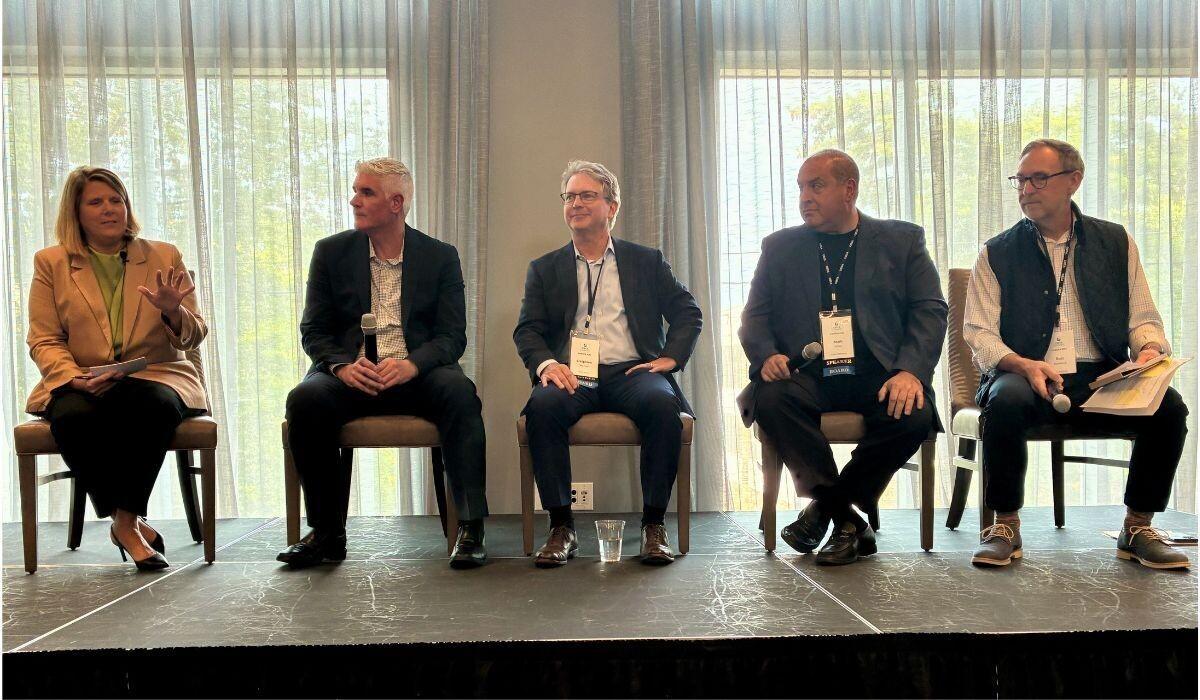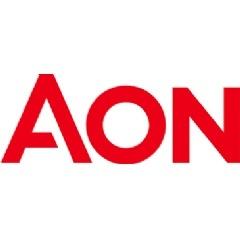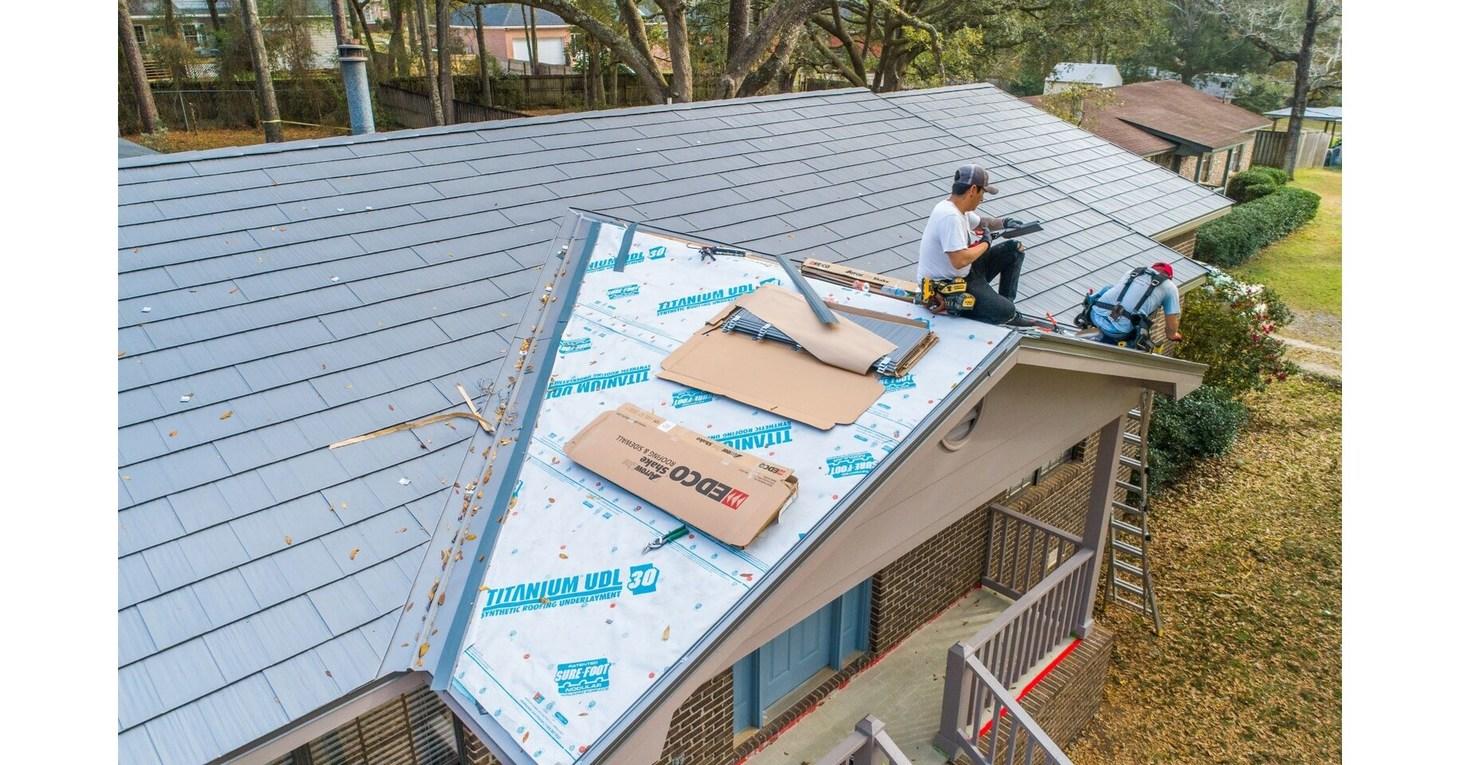AI in Insurance

The AI Tsunami: Are We Still Building Sandcastles?
The AI Tsunami: Are We Still Building Sandcastles?
Right now, the insurance industry feels like the moment in The Matrix when Neo is offered the red pill and the blue pill.
Are you taking the blue pill, staying comfortably in "Pilot Purgatory," doing small, siloed experiments (<$5M/yr), hoping the AI 'disruption' will pass?
Or are you taking the red pill, committing to Strategic Deployment at Full Scale (>$25M/yr), redesigning end-to-end processes, and demanding Explainable AI (XAI)?
The data is clear: AI is no longer a strategic roadmap item; it's a competitive execution challenge.
Carriers are racing toward:
- High-Speed Pricing: Real-time risk modeling using geospatial data (shout out to the tech like CAPE Analytics ! Now part of Moody's - Insurance Solutions) for instant, hyper-personalized quotes.
- Scalable Efficiency: Leveraging GenAI to cut costs and upskill staff through sophisticated, automated underwriting and claims workbenches along with enhancements to customer and agent support portals.
- Ethical Guardrails: The new regulatory mandate for Explainability. If your AI can’t justify its decisions to a human (and a regulator), it’s a time bomb.
New players are building their companies on this foundation, either more fully leveraging enhancements within their current tech stack or utilizing startups across the board—from Tractable's computer vision for faster claims to Altana AI's supply chain intelligence for commercial underwriting. They're not just adding tech; they're fundamentally changing the friction points.
If you’re stuck in the 17% of insurers struggling to scale, the competition isn't waiting. In the words of another movie analogy... you don't want to be the one who brings a knife to a gunfight.
Where is your organization on the scaling journey? What's the biggest obstacle preventing your AI pilots from becoming enterprise-wide production? Let’s start a conversation.
Kaenan Hertz 💡 Founder & Insurtech Leader | Guiding C‑Suites to Harness AI and innovation for Growth, Efficiency & Competitive Advantage
How Five Sigma’s Clive AI is delivering measurable results in claims handling
Five Sigma has experienced a breakout year in 2025, with considerable demand for its AI and automation solutions for claims management.
The company’s multi-agent AI Claims Expert – Clive – works on top of any claims management system (CMS), accelerates claims handling and saves millions of dollars for insurers.
Clive was launched a year ago and today serves many carriers and TPAs worldwide, adding more use cases and functionality. Michael Krikheli, co-founder and CTO at Five Sigma, noted that the market has matured, with businesses moving from experimentation to seeking real ROI and production use cases. This shift has even prompted carriers and TPAs to rethink their technology strategies and consider replacing their current systems with an AI-native platform.

How AI, Remote Work and Inflation Are Shaping the Future of Professional Lines : Risk & Insurance
Head winds including social inflation, traditional inflation and business uncertainty assail many lines of insurance business. But so far, professional liability has avoided a hardening, or hard market.
Professional lines rates declined four percent globally in the second quarter of 2025, according to Marsh’s Global Insurance Market Index.
That encompasses everything from directors and officers’ (D&O) and employment practices liability to fiduciary liability and crime.
In the U.S., rates were flat after 11 consecutive quarters of declines as insurers have increasingly sought to achieve minimum premium levels higher than current pricing, with some opting out of renewals or reducing capacity altogether.
“We have been in an aggressively soft market for the last few years, but it seems to be stabilizing now,” said Paul Larson, president, financial lines for North America at Liberty Mutual. “There’s also more competition, with some carriers walking away from what they consider to be underpriced business.”
Professional Lines Challenges
The biggest challenge currently facing professional lines firms is social inflation. This continues to be driven by nuclear jury verdicts and inflated settlement expectations driving claims payments, while claims costs have also risen.
How EZLynx is Empowering the Next Generation of Insurance with AI
The insurance industry is experiencing one of its most significant transformations in decades. Fueled by evolving customer expectations and workforce attrition, the ability to leverage agency management technology is becoming a key factor in how independent agencies compete and deliver value.
At EZLynx, we’re focused on using artificial intelligence (AI), not just to automate workflows, but to fundamentally reshape how agencies operate and interact with clients. By embedding intelligence into everyday processes, we’re creating the foundation for a more agile, data-driven industry—one that empowers the next generation of insurance professionals to work smarter, not harder.
Getting to know EVA: Smarter Workflows and Exceptional Service
One of the key ways we’re doing this is through EVA (EZLynx Virtual Assistant™). EVA leverages artificial intelligence to help agencies spend less time on administrative tasks and more time serving clients and expanding their business. From drafting the perfect email to quickly getting up to speed on client accounts, EVA is like a personal assistant—only better, and one that never sleeps.MORE

Large MSOs Using AI, Working to Improve Industry’s Tech Links - Autobody News
What role artificial intelligence (AI) is playing in the collision repair industry — and efforts to strengthen the systems tying shops to their parts suppliers, insurers and other trading partners — were among the key topics at the CIECA conference in Nashville.
“There’s just a wild amount of noise that exists in this space today around AI,” Ryan Alley, chief information officer (CIO) for Classic Collision, which operates more than 300 shops in 20 states, said during a panel discussion featuring CIOs from five collision repair business.
“A lot of it is speculation or really great marketing, and there were months and months of, ‘AI is going to fix every problem,’” Alley said. “And then over the last few months, there’s been a whole other kind of argument that, ‘Nope, it all fails. Every dollar that anyone put into AI, they didn’t get anything back.’
“The reality is neither of those things are true,” Alley continued. “There is a massive amount of opportunity that can be unlocked through AI, if you know what you’re trying to achieve, and you have pretty clear objectives going into it.
Ryan Alley of Classic Collision said the promise of AI is sometimes overblown and sometimes dismissed — and neither extreme is accurate.
“If you look at opportunities to really unlock the value of the people within your organization, allowing them to spend more of their time doing the things that they’re good at and doing the things that add value, and offload things that are more repeatable and further upstream, there is an incredible amount of value that can get [achieved] within the organization,” he said.
Another panelist, Mark Miller, CIO for Crash Champions, which operates more than 600 shops, said he views the applications of AI as “almost limitless” within the industry.
“We’ve worked with a lot of our partners on using AI estimatics,” Miller said. “Taking the human component out of writing an estimate is a huge productivity gain. And that’s really the basic premise of AI. A lot of people think it's to eliminate jobs. It’s when you couple it with the human component, it actually yields more productivity.
Mark Miller of Crash Champions said AI is proving effective at generating initial estimates. “So we work with a lot of vendors on let’s get to the point where we take the human out of the early part of the supply chain,” Miller said. “So when you do intake, you’re doing photos and you are sending it right to the estimatics tool to start to write some of that estimate for you. We’ve been watching it for about four months and there’s no hype to it. It actually works.”
Miller was asked whether he sees AI being used to create an actual repair plan, or just an initial estimate of repair costs. Miller acknowledged the systems aren’t writing complete estimates.
“We are working with models that are writing 60 to 80 percent of the estimate, and then we become the auditor,” Miller said. “So it’s no different than if I received an estimate from an outside source, say, one that I got from a carrier. My job is to then audit that estimate. It’s really the same thing here.”
He said his organization is looking at other ways to use AI to reduce the growth of fixed costs as the organization grows.
“I can do that by offloading the things that don’t require a human to AI, and then have oversight into what the AI is doing,” Miller said. “You would manage it just like any employee. So when we use it in our call center, you're still listening to the calls, you’re still coaching it and you’re training it just like you do a call center person. We’ve had a lot of good luck with it.”

Aon Launches Claims Copilot: Bringing Together Expert Advocacy and Advanced Technology for better client outcomes | WebWire
Latest innovation builds on the firm’s Aon Broker Copilot and Risk Analyzers to deliver greater speed, insight and value in claims resolution and analytics
Aon plc (NYSE: AON), a leading global professional services firm, today announced the launch of Aon Claims Copilot, a single, integrated digital platform designed to enhance client outcomes through advanced analytics, automation, globally consistent claims management and the specialized expertise of Aon’s claims advocates.
Aon Claims Copilot reflects the firm’s commitment to delivering outstanding claims services to clients when it matters most. The new platform supports every stage of the claim’s lifecycle – from the occurrence of a claim to advocacy and negotiation and resolution with advanced analytics. It enables global consistency, data-led performance evaluation and tailored insight to support each client’s risk capital strategy, with additional AI-driven capabilities to come in the first half of 2026. Clients are equipped with access to claims analytics, while Aon colleagues benefit from advanced digital tools to deliver faster, more effective claims outcomes.
Commentary/Opinion

What U.S. Elections Mean for Insurers | Insurance Thought Leadership
While the post-mortems continue following the rout by Democrats in last week's elections, one clear theme has emerged, and insurers should lean into it.
Following last week's elections in the U.S., it seems that for every two pundits you find three opinions about what the elections tell us about the prospects for the midterms coming up in a year. But seemingly everyone has settled on a theme that politicians must and will hit hard:
Affordability.
That word is everywhere, and not just among Democrats, who used it to win elections for governor in New Jersey and Virginia, for mayor of New York City and for a host of down-ballot offices, including in areas thought of as Republican strongholds. President Trump has vowed to wrest ownership of the affordability theme from Democrats, and a high-profile acolyte of his running for governor of New York says affordability will be her watchword, too — as does the current governor, who will represent the Democrats. Everybody loves affordability.
No matter who wins the arm wrestling match, you can be sure that billions of dollars in ads will run in the next 12 months hammering home the need to make goods and services more affordable in the U.S.
That represents an opportunity for the insurance industry.
Paul Carroll, editor-in-chief, Insurance Thought Leadership
Climate/Resilience/Sustainability

HOMEOWNERS HIT THE ROOF AS COSTS FOR HOME INSURANCE COVERAGE SKYROCKET
MRA experts share how picking the right roof can offer better pocketbook protection
Millions of homeowners are experiencing sticker shock when it comes to increases in home insurance costs.
And that is if they can get home insurance at all. In places like Florida and California where claims resulting from climate change disasters have skyrocketed in recent years, some homeowners are finding it near impossible to get affordable coverage to protect their home
- MRA says asking the right questions pays off in the long run when it comes to potential insurance discounts
- MRA says asking the right questions pays off in the long run when it comes to potential insurance discounts
That's why making improvement decisions that could help lower the cost of insurance premiums is more essential than ever. According to experts at the Metal Roofing Alliance (MRA), the largest nonprofit organization representing the residential metal roofing industry in the U.S. and Canada, this is particularly true when it comes to re-roofing decisions.
Using more durable materials like metal can reduce your homeowner's insurance costs because it helps protect against damage and costly repairs. Many home insurance companies prefer quality metal roofs and will offer discounts to homeowners who install them. Why? Because most quality metal roofing systems are more resilient against high winds, offer a Class A rating (the highest possible) for wildfire, and provide a Class 4 rating for hail damage protection (according to UL Standard 2218 classification system). Metal roofing also is stronger and lighter, making them better able to withstand heavy snow and ice buildup loads - severe winter conditions that could cause inferior or worn out roofs to collapse.
Predict & Prevent

Storm Exposes Flood Insurance Coverage Gaps | Insurance Thought Leadership
America's flood insurance crisis deepens as climate-fueled disasters expose low penetration rates in vulnerable communities.
Between April 1 and April 6, 2025, a storm crossed the south and eastern Midwest of the United States, bringing strong winds, tornadoes and heavy rainfall to a large area ranging from North Dakota to Texas. The most significant damage occurred in Iowa, Missouri, Arkansas, Kentucky, Oklahoma, Tennessee, Indiana and Mississippi. The National Weather Service warned a week beforehand that the storm had the highest possible risk, allowing emergency managers to prepare.
Neil Gunn is head of flood and water management research at WTW.
Veterans Day

Progressive's Keys to Progress® Program Provides 100 Vehicles to Veterans Across the Country
Progressive Insurance® will once again put keys into the hands of America's heroes. On November 6, Progressive will host its 13th annual Keys to Progress® vehicle giveaway event, donating 100 vehicles to veterans, their families, veteran-focused organizations and veteran-owned small businesses across the United States to provide relief and improve the lives of military men and women, enabling them to progress forward in their lives.
In advance of Veteran's Day, Progressive will be hosting over 65 events in 47 states this year where veterans across the country will be receiving vehicles.
Since launching in 2013, Keys to Progress® has donated more than 1,200 vehicles nationwide, offering veterans reliable transportation to help them access work, medical care and community engagements.
"At Progressive, we believe mobility creates opportunity. Keys to Progress® isn't just about donating cars, it's about helping veterans and their families regain independence, stability and the ability to move forward with confidence," said Tricia Griffith, President and CEO of Progressive. "Thirteen years in, the impact we've seen reminds us why this program matters so deeply."
People
Sedgwick Names Paul White as CEO of International Operations
Sedgwick named Paul White CEO of its international operations.
White assumes the leadership role effective Jan. 1, 2026.
White currently serves as regional CEO for Sedgwick International. He will take over from Tom Simoncic, president of global property and international, who is retiring after 18 years with the company.
White has led Sedgwick’s operations across the U.K., Australia, Asia, the Middle East, New Zealand and South Africa for the past six years. He previously served as the company’s U.K. CEO and COO.
Sedgwick provides claims administration and risk management services worldwide
Canada
Davies to acquire SCM Insurance Services
UK-based insurance services firm Davies has signed an agreement to acquire SCM Insurance Services, Canada’s largest claims processing and risk solutions provider.
The deal will see SCM’s three operating businesses; ClaimsPro, the claims adjusting firm; IPG, its third-party claims administrator; and Pario, its forensic engineering and consulting business and post-loss appraisal, all join the Davies global platform.
Following the deal, Davies will have annual revenues of $1.4 billion, with a combined team of 9,500 colleagues operating in 22 countries across Europe, North America, South America, Asia, and Australasia.
The deal represents Davies’ largest strategic M&A addition to date. According to a report by Bloomberg, the transaction values the combined businesses at $4.3 billion including debt.
The addition of ClaimsPro, IPG, and Pario will strengthen Davies’ existing risk management, TPA and end-to-end claims solutions offering across North America, adding specialized services for insurers, brokers, MGAs, Lloyd’s Syndicates, corporates, the public sector and captive owners.
As part of the acquisition, SCM’s existing institutional shareholders, Warburg Pincus and TorQuest Partners, will reinvest part of their proceeds and become minority shareholders in Davies, alongside Davies’ existing institutional shareholders: BC Partners, AIMCo, and HGGC. BC Partners took a majority stake in Davies in August 2021, with the business tripling annual revenues under BC’s ownership.
